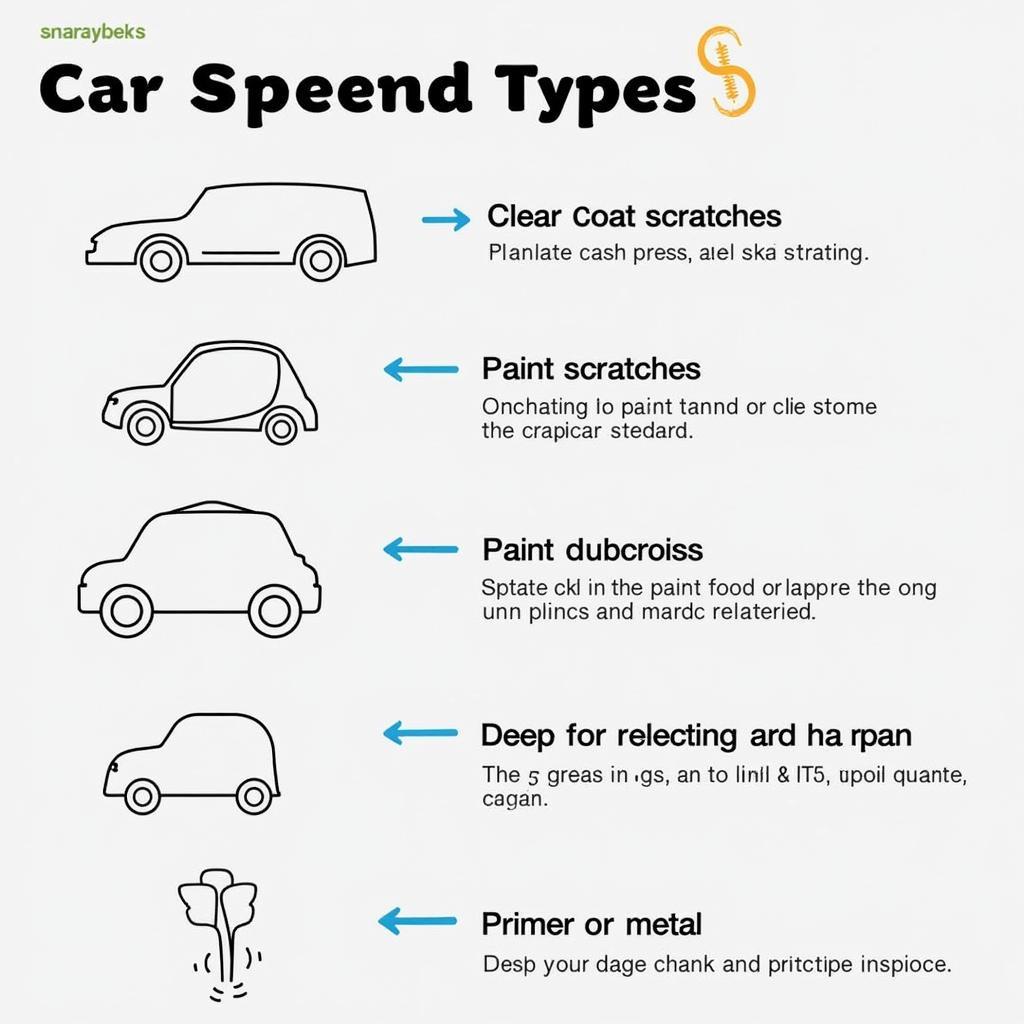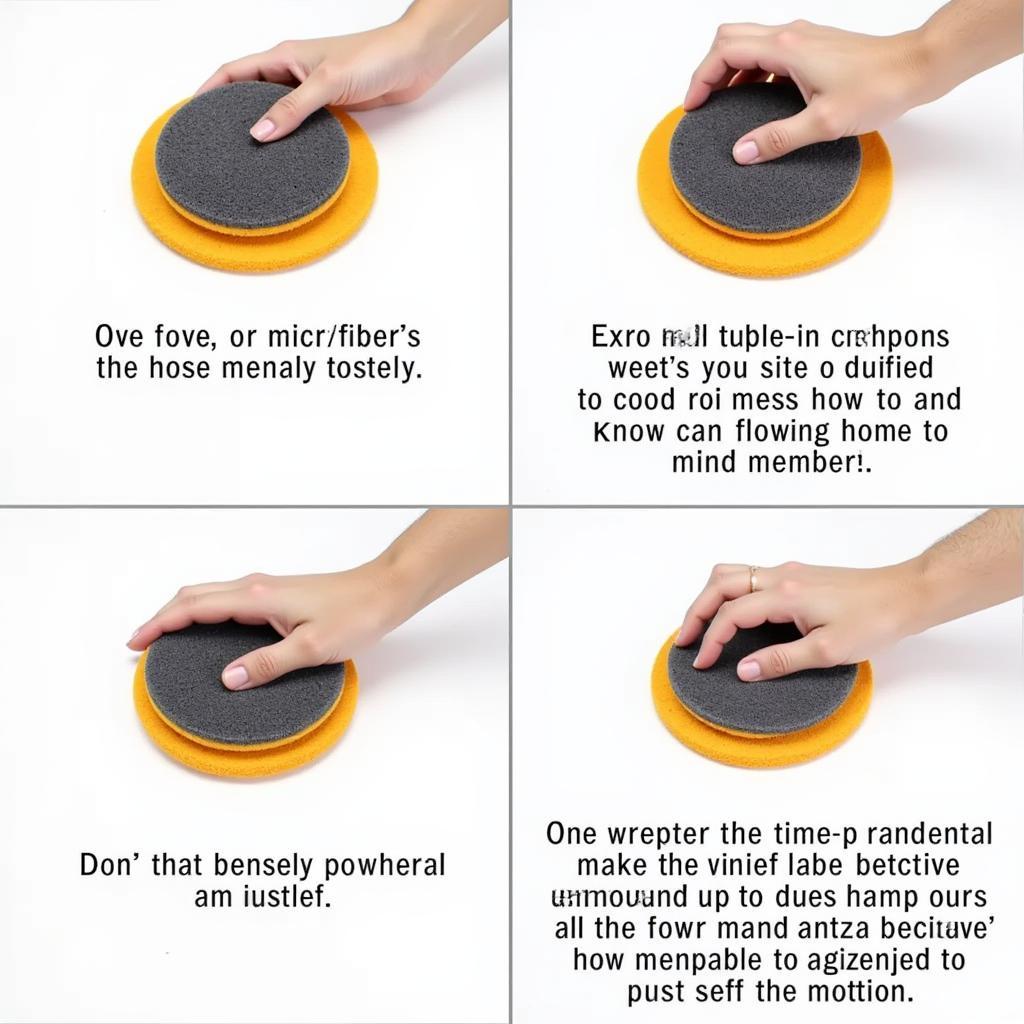Fixing scratches on your car with compound can seem daunting, but with the right knowledge and tools, it’s a manageable DIY project. This guide will walk you through the process, from assessing the damage to achieving a professional-looking finish. We’ll cover everything you need to know to Fix Scratches On Car With Compound Scratches effectively.
Understanding Car Scratches and Compound
Before diving into the how-to, let’s understand what we’re dealing with. Car scratches vary in depth, from minor clear coat imperfections to deep gouges that expose the metal underneath. Compound, also known as rubbing compound, is an abrasive paste designed to remove these scratches by leveling the surrounding paint. It’s crucial to choose the right type of compound and technique for your specific scratch. Using the wrong compound or technique can worsen the damage, so understanding the basics is key. Ever wondered if you could fix a small nick in your car door? The answer is often yes! Check out this helpful guide: how to fix a very small nick in car door.
 Types of Car Scratches
Types of Car Scratches
How to Fix Scratches on Car with Compound Scratches: A Step-by-Step Guide
- Wash and Dry: Thoroughly clean the scratched area with car wash soap and water. This removes any dirt or debris that could further scratch the paint during the compounding process. Dry completely with a microfiber towel.
- Assess the Damage: Determine the depth of the scratch. If you can feel the scratch with your fingernail, it’s likely deeper than the clear coat and requires more attention.
- Choose the Right Compound: For light scratches, a fine-grit rubbing compound is sufficient. Deeper scratches may require a medium-grit compound followed by a fine-grit compound for polishing.
- Apply the Compound: Using a clean microfiber applicator pad, apply a small amount of compound to the scratched area. Work in small, circular motions, applying moderate pressure.
- Buffing: Once the compound has dried to a haze, use a clean microfiber cloth to buff the area. Check your progress frequently.
- Repeat if Necessary: For deeper scratches, you may need to repeat steps 4 and 5 several times. Be patient and avoid applying too much pressure, which could damage the paint. Deep scratches might require professional attention. You can find information on how to fix deep scratches here: how to fix deep scratches on car paint.
 Applying Rubbing Compound to a Car Scratch
Applying Rubbing Compound to a Car Scratch
What are the common mistakes when using rubbing compound?
Common mistakes include using too much pressure, using the wrong type of compound for the scratch, and not properly cleaning the area before starting.
“Patience is key when fixing scratches on a car. Rushing the process can lead to further damage. Take your time, assess the damage properly, and use the correct techniques.” – John Miller, Automotive Detailing Specialist
Can I fix all scratches with rubbing compound?
No, very deep scratches that expose the metal underneath may require professional repair. If you have a scratch on your plastic bumper, check out this article: fix scratch on plastic car bumper.
Protecting Your Car’s Finish After Compounding
After fixing the scratches, it’s important to protect the newly repaired area. Applying a coat of wax or sealant will help shield the paint from further damage and maintain its shine. It also adds a layer of protection against UV rays and environmental contaminants.
Conclusion
Fixing scratches on your car with compound is a cost-effective way to maintain its appearance and value. By following these steps and taking your time, you can achieve professional-looking results. Remember to choose the right compound, use the proper technique, and protect the finish afterward for long-lasting results. Contact us at AutoTipPro for further assistance at +1 (641) 206-8880. Our office is located at 500 N St Mary’s St, San Antonio, TX 78205, United States.
Have you ever wondered about the cost to fix a chip in your car’s paint? Check out this helpful resource: cost to fix chip in car paint. Also, for torn leather repair on your car door, see: how to fix torn leather on car door.




Leave a Reply